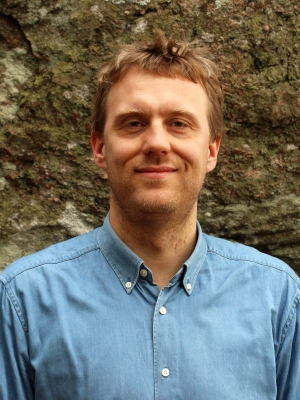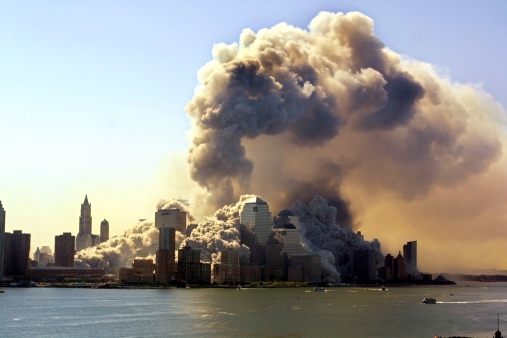–What surprised me was that I found a basic similarity in how the attacks were understood in the US and Norway, says PhD candidate at the Department of Sociology and Human Geography, Tore Witsø Rafoss. He now works at KIFO, the Institute for Church, Religion, and Worldview Research.
Rafoss has studied reactions in the community during the first four weeks after the terrorist attacks in Norway on 22 July 2011. He has watched Prime Minister Jens Stoltenberg's speeches and compared them with the speeches President George W. Bush held in the US in the weeks after 11 September 2001.
–In both countries the attacks were seen as an attack on the nation's heart and values. It was said that the terrorists had already lost, because they failed to destroy the nation's fundamental values. There are several assumptions behind such an interpretation, says Rafoss.
An attack on values
One of these assumptions was that both Anders Behring Breivik and Al Qaeda were understood as political terrorists, although in many ways they were very different agents.
– Stoltenberg could for example have described 22 July as the work of a mad man or as an apolitical school massacre. But then the narrative of a fight for democracy would have collapsed. If Breivik was 'only' a crazy violent man it would no longer be meaningful to say that the Norwegian people had defended democracy.

This may partially explain the great interest in the debate on whether Breivik was mentally ill, thinks Rafoss.
– If he had been transformed into someone suffering mental illness, he could no longer have fulfilled his role as an anti-democrat. It would then have been pointless to rally in front of Oslo City Hall and fight for democracy. One cannot defend democracy if it is not under attack.
In the period after the Norwegian terrorist attacks, it was also emphasized, both by the prime minister and other politicians, that Breivik not only attacked the Workers' Youth League of Norway (AUF) or the Labour Party (AP). He was a political terrorist, but not party political. This was another prerequisite for the way the terrorist attack was understood.
Community Feeling
US President George W. Bush too had talked about the terrorist attacks in the US as a political attack on the nation and its values. As in Norway, this contributed to a strong sense of community and Bush's support in opinion polls was, for a period, the highest of any president since World War II.
– In both countries in the weeks after the attacks a national consensus was formed. People stood together. Both Bush and Stoltenberg spoke a great deal about who we are as a nation and what the nation stands for. Although the terrorists had managed to destroy people and buildings, it was said that they had already lost the biggest battle, which was the one over abstract values of freedom, openness and diversity, says Rafoss.
When one narrative is stressed, others fade into the background. According to Rafoss the emphasis on cohesion and shared values in Norway may have led to less attention being paid to the individual victims.
–The victims were generalized, as the representatives of the country. Their role as individuals and victims of a tragic event was perhaps set aside, he says.
Differences between the reactions in Norway and the US
Although there were many similarities in the reactions in Norway and the US, there were also major differences. This is partly because the actual attacks were quite different. Breivik was ethnically Norwegian, acting alone and was arrested that same day. In the US, those responsible were still at large and part of a global terrorist network. There, the political debate was dominated by the war on terror and by both a military and rhetorical escalation of the war in Afghanistan.
– Looking at the speeches of Bush and Stoltenberg it is evident that they used very different rhetoric. Bush is far more militaristic and emphasizes conflict and difference. He is concerned with the struggle between good and evil and that evil must be exterminated. Bush saw the war on terror as a war between good and evil, between civilization and barbarism – a war that would not be over until all terrorists were annihilated. Stoltenberg speaks rather of love, fellowship and reconciliation.
Rafoss thinks that the rhetoric is a reflection of two different ways of understanding morality: In the first there is a clear boundary between good and evil, and evil must be defeated. In the second morality is more about caring and the will to achieve reconciliation.

Terrorism is a semantic threat
There has been a steady increase in the number of people killed in terrorist attacks in the world. In 2014 nine times as many were killed as were in 2000. These attacks take place mainly in non-Western countries. 78 per cent of those killed by terrorists in 2014 were concentrated in just five countries: Iraq, Syria, Afghanistan, Pakistan and Nigeria.
Although the risk of being killed in such an attack is still very small, the threat of terrorism casts a shadow over us all, Rafoss points out.
– Terrorism is not just a security threat but threatens meaning and affects how we think about ourselves and the world. The fact that such evil exists at all damages our fundamental trust in the world. Exactly what it means and how it affects us is a difficult but important issue that we need to do more research into, says Rafoss.
In his thesis, he uses theories from philosophy and phenomenology to understand the feelings of meaninglessness that often accompany a terrorist attack.
- Terror has become a shadow that we define ourselves in relation to: We are all that the terrorists are not. But exactly what this means and how it is expressed can vary widely. We see this time and again. Different kinds of community are formed by terror, and these communities can be both inclusive and excluding, says Tore Witsø Rafoss.
